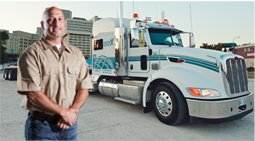Each year, over 1,100 workers are injured in the trucking industry. In addition to the danger and harm done to our drivers and workers, direct and indirect costs from injury are said to exceed $90 million annually.
Employees and employers in the trucking industry can both stand to benefit from a better understanding of safety procedures within their working environment. Benefits can include:
> Reduced risk of workplace injury
> Secure livelihood and the ability to support self and family
> Improved quality of life
> Longer career
> No lost time due to injury
Occupational Safety and Health are real concerns within the trucking industry. TransX is committed to ensuring the safety of our drivers. Each year, we recognize safe driving at our Annual Safety Awards Banquet. Drivers have the discretion to stop driving if they think they are at risk, regardless of the cause. Our safety training programs are comprehensive and provides adequate training on topics such as winter driving, dangerous goods handling, slip and fall and border security, just to name a few.
The North American Occupational Safety and Health (NAOSH) Week is a continent-wide event spanning Canada, USA and Mexico that highlight to the public, government, and industry the importance of increasing understanding, raising awareness and reducing injuries and illness in the workplace, at home and in the community.
It is a great opportunity to think again about safety when you are in or outside of the cab! Visit the NAOSH website for more information.















